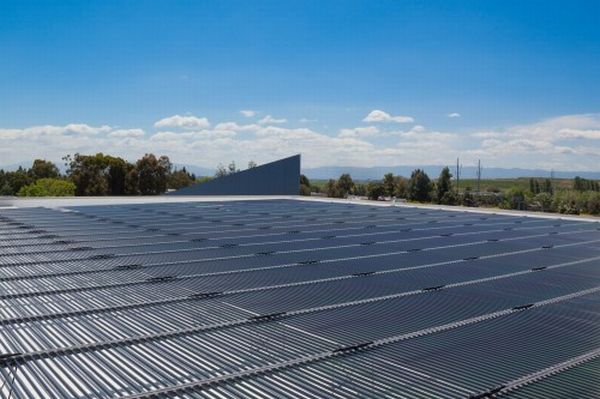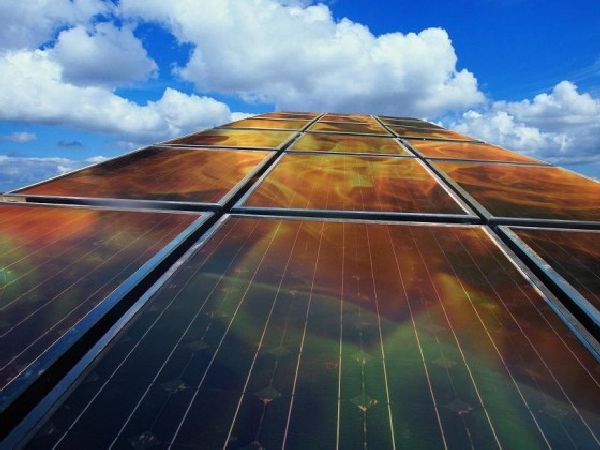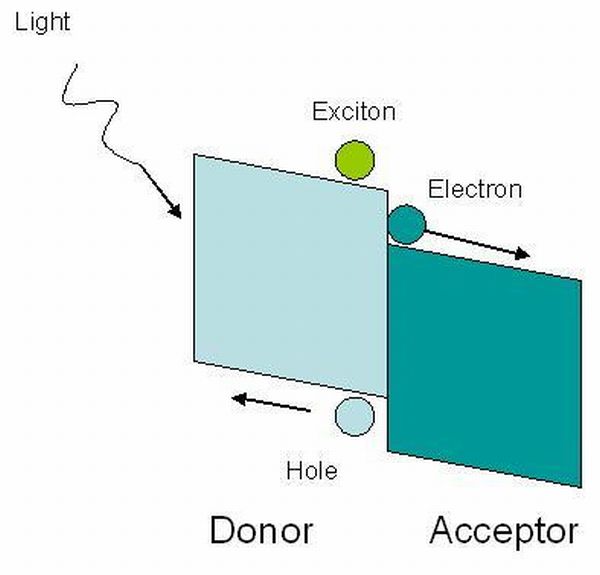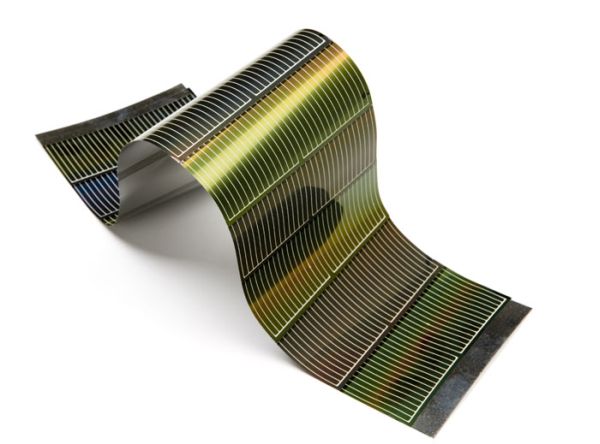Hybrid photovoltaic cells are actually a composite of organic materials including conjugated polymers. These cells also contain some inorganic materials. The most common are CdSe, TiO, ZnO and PbS. The polymers absorb light by acting as the donor and transport holes, while the inorganic materials work as electron transporter and acceptor. Hybrid solar cells are highly cost effective and completely non-polluting. In some cells, a single panel consists both the PV and thermal elements to make a photovoltaic thermal (or PV-T) collector. This allows the cells to mitigate the heat and generate electricity constantly. Besides this, this also reduces the space needed for the installation of solar panel on roof.
The good:
The PV and thermal elements are included onto a single panel:

Hybrid solar cells have various advantages, especially in relation to their potential for being cost effective. Moreover, some of them incorporate both the PV and thermal elements onto a single panel, for a photovoltaic thermal (or PV-T) collector. This in turn enables them to mitigate the heat for constant generation of electricity (conventional PV panels typically lose efficiency of up to 0.5 percent per Kelvin degree rise in panel temperature), and also allows for reduced roof space for the total solar installation.
The bad:
High installation cost

One of the biggest weaknesses of the solar cells is the high installation cost. The amount of electricity generated by these solar cells is not high but the initial cost of setting up the solar plant is pretty high.
Can this be avoided?
These days we are using modern technology to increase the performance of the PV module and the use of PV-T hybrid collector enables us to install the solar cells using lesser roof space. The output however, remains same. The ROI of the hybrid PV-T system is lesser than the PV systems. The lifetime of cells also increase because of the reduction of the temperature of the PV cell.
The ugly:
The most notable problem is the reduction of the exciton diffusion length.

In hybrid solar cells, a photoactive layer is formed by mixing an organic material with a high electron transport material. The two materials combine with each other in a photoactive layer, which is of heterojunction type. The efficiency of power conversion can be increased by placing one material in contact with another because one of the materials works as the absorber of photon and exciton donor.
Why are we so critical?
The major drawbacks of the organic photovoltaic cells are low efficiency, instability and they are not as powerful as other inorganic photovoltaic cells. A photovoltaic cell is a semiconductor diode, which generates electricity using visible light. Some photovoltaic cells can also generate direct current by using infrared (IR) or ultraviolet (UV) radiation. The small molecules and polymers in photovoltaics are large conjugated systems.
The Bottomline:
The PV/T system, which is in use these days, contains an antifreezing solution and two batteries, which is lacking in conventional hybrid systems. The initial cost of these solar cells is also higher than the conventional one. Solar cells are complex and costly to produce but the introduction of hybrid solar cells is expected to resolve these problems.




